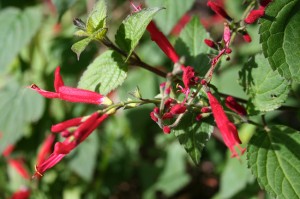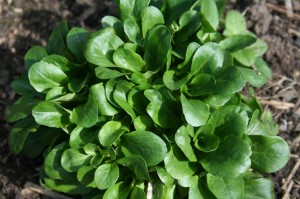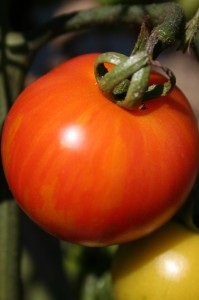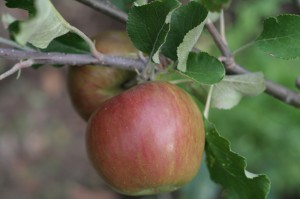At this time of year articles begin to proliferate describing plants you can grow that will lend splashes of colour to sombre autumn and winter days. As usual I am gaining much pleasure from the bright red flowers of pineapple sage (Salvia elegans). So too are the eastern spinebills who flash their tawny throats at me as they fossick for nectar. Also dog’s bane (so named because it’s ability to repel some dogs), Plectranthus ornatus, has been sporting its strong, mauve flowers for months now and will continue to do so right through winter. Really for me the colour highlights in late autumn and winter come from all the plants I haven’t planted, the ones that turn up whether you want them or not.
Read more
The lovely autumn days entice me into the garden where I have been madly weeding and cutting back the prolific summer growth. I love this time of year when the soil is still warm, so plants are still growing, but the intense heat has gone. Two plants that come into their own now are corn salad and landcress. These are both annuals (landcress is sometimes biennial) that self sow around my garden providing salad greens right though autumn and winter.
Corn salad (Valerianella locusta) is also known as lamb’s lettuce, and has a delicate very mild flavour with soft leaves that almost melt in the mouth. The leaves are pale green and rounded and grow in small clumps. You can pick the leaves individually or cut whole plants just above the ground, they will re-shoot. Plants only reach about 30cm in height. There are cultivars with golden, extra large and darker green leaves. Grow corn salad in temperate and cold regions from seed sown in autumn, winter and spring—in hot weather it goes to seed almost immediately. I find that mine goes to seed in spring, then disappears until autumn when the plants appear again in a dense clump. Read more
By Anne-Marie
A FRIEND has just arrived with that most treasured of gifts, fresh tomatoes, bless her glut. Black Krims, Little Sugars, Tigerella and Cherry Toms surplus to her own requirements, and a generous handful of fresh basil. She has had a good tomato season (mine was awful: I planted them in the wrong place, neglected them badly and missed one of summer’s pleasures). She is one of those natural gardeners who can grow anything without much apparent effort, and she has been a source of wisdom for years.
So I have immediate plans for them, involving garlic and basil and crisp salad greens and some proper rustic croutons warm from the oven, with a herby dressing and some warm, thinly sliced rare beef scattered over the top, and the pan juices poured over to mingle with the dressing. A very satisfactory meal, as long as everything is properly seasoned with plenty of salt and pepper. I don’t hold with a lack of seasoning: flavour is all. Read more
This bountiful season of “mists and mellow fruitfulness” sees an abundance of ripe pome fruits on the trees. As well as the better known apples and pears there are also persimmons, pomegranates, quinces, rowans and rose hips.
Our supermarkets and greengrocers offer only about 5 varieties of apples and 3 different pears and we almost never see any of the other autumn fruits mentioned above. The obvious conclusion is that if you want really good fruit and anything other than these common varieties then you need to grow them yourself.
Although you can now buy potted fruit trees all year round, it’s best to use bare rooted apple and pear trees. These are purchased and planted in winter when you’ll find most nurseries offer at least a limited range. Autumn however, is the perfect time to plan your orchard (no matter how small), to taste the different varieties and to order your plants. At the National Trust Property, Rippon Lea, there is a large orchard of more than 100 different apples and 30 different pears. They have an Apple Day on Sunday 3rd of April 2011 when 40 of these varieties will be for sale, including some that are grown only for cider.
Apart from Rippon Lea, if you want something other than the more common varieties then you’ll need to order your trees from a specialist nursery. Read more




